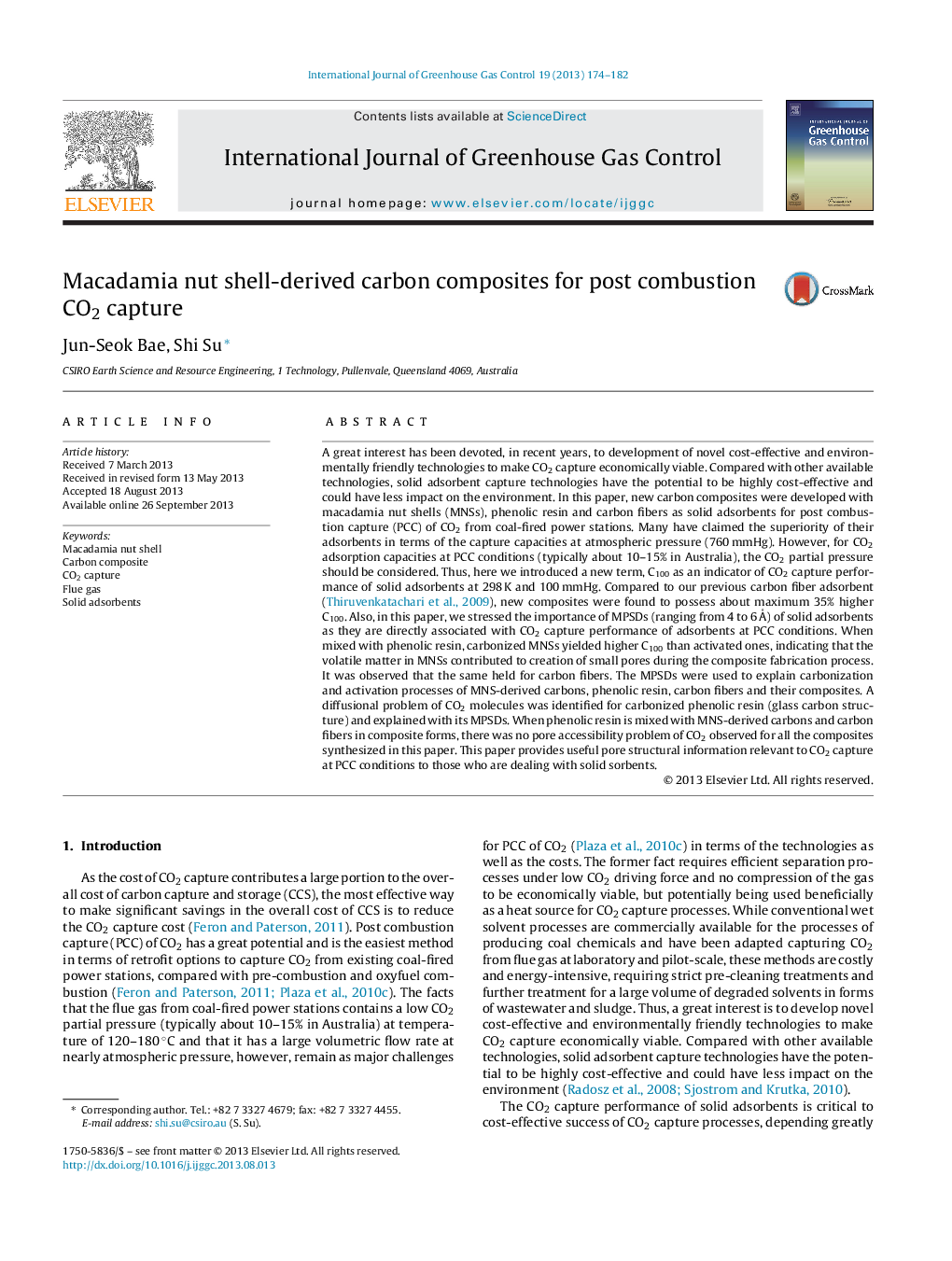| کد مقاله | کد نشریه | سال انتشار | مقاله انگلیسی | نسخه تمام متن |
|---|---|---|---|---|
| 8091759 | 1522002 | 2013 | 9 صفحه PDF | دانلود رایگان |
عنوان انگلیسی مقاله ISI
Macadamia nut shell-derived carbon composites for post combustion CO2 capture
دانلود مقاله + سفارش ترجمه
دانلود مقاله ISI انگلیسی
رایگان برای ایرانیان
کلمات کلیدی
موضوعات مرتبط
مهندسی و علوم پایه
علوم زمین و سیارات
فرآیندهای سطح زمین
پیش نمایش صفحه اول مقاله

چکیده انگلیسی
A great interest has been devoted, in recent years, to development of novel cost-effective and environmentally friendly technologies to make CO2 capture economically viable. Compared with other available technologies, solid adsorbent capture technologies have the potential to be highly cost-effective and could have less impact on the environment. In this paper, new carbon composites were developed with macadamia nut shells (MNSs), phenolic resin and carbon fibers as solid adsorbents for post combustion capture (PCC) of CO2 from coal-fired power stations. Many have claimed the superiority of their adsorbents in terms of the capture capacities at atmospheric pressure (760Â mmHg). However, for CO2 adsorption capacities at PCC conditions (typically about 10-15% in Australia), the CO2 partial pressure should be considered. Thus, here we introduced a new term, C100 as an indicator of CO2 capture performance of solid adsorbents at 298Â K and 100Â mmHg. Compared to our previous carbon fiber adsorbent (Thiruvenkatachari et al., 2009), new composites were found to possess about maximum 35% higher C100. Also, in this paper, we stressed the importance of MPSDs (ranging from 4 to 6Â Ã
) of solid adsorbents as they are directly associated with CO2 capture performance of adsorbents at PCC conditions. When mixed with phenolic resin, carbonized MNSs yielded higher C100 than activated ones, indicating that the volatile matter in MNSs contributed to creation of small pores during the composite fabrication process. It was observed that the same held for carbon fibers. The MPSDs were used to explain carbonization and activation processes of MNS-derived carbons, phenolic resin, carbon fibers and their composites. A diffusional problem of CO2 molecules was identified for carbonized phenolic resin (glass carbon structure) and explained with its MPSDs. When phenolic resin is mixed with MNS-derived carbons and carbon fibers in composite forms, there was no pore accessibility problem of CO2 observed for all the composites synthesized in this paper. This paper provides useful pore structural information relevant to CO2 capture at PCC conditions to those who are dealing with solid sorbents.
ناشر
Database: Elsevier - ScienceDirect (ساینس دایرکت)
Journal: International Journal of Greenhouse Gas Control - Volume 19, November 2013, Pages 174-182
Journal: International Journal of Greenhouse Gas Control - Volume 19, November 2013, Pages 174-182
نویسندگان
Jun-Seok Bae, Shi Su,